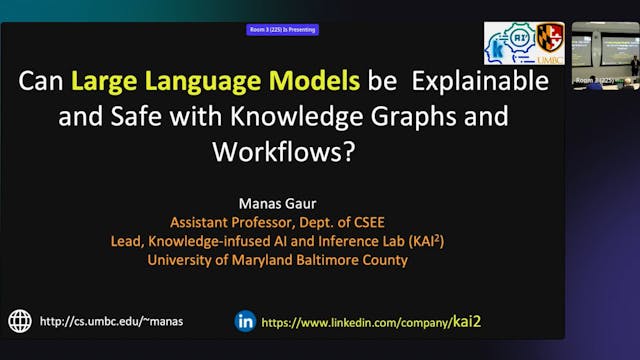Neuralsymbolic Visual Understanding and Reasoning using Deep Learning and KGs
May 11 | KGC 2023
•
25m
Visual AI has made incredible progress in basic vision tasks using deep learning techniques that can detect concepts in visual scenes accurately and quickly. However, the existing techniques rely on labelled datasets that lack common sense knowledge about visual concepts and have biased distribution of visual semantic relationships. As a result, these techniques have limited visual relationship prediction performance, limiting the expressiveness and accuracy of semantic representation and downstream reasoning. We employed deep neural networks to predict visual concepts, including objects and visual relationships, and linked them to generate symbolic image representation. To alleviate the challenges above, we leveraged rich and diverse common sense knowledge in heterogenous knowledge graphs to systematically refine and enrich the generated image representation. As a result, we observed significant improvement in recall rates of visual relationship prediction (7% increase in Recall@100), expressiveness of the representation, and the performance of downstream visual reasoning tasks, including image captioning (15% increase in SPICE score) and image reconstruction. The encouraging results depict the effectiveness of the proposed approach and the impact on downstream visual reasoning.
Up Next in May 11 | KGC 2023
-
Targeted Knowledge Infusion To Make C...
Conversational Systems (CSys) represent practical and tangible outcomes of advances in NLP and AI. CSys see continuous improvements through unsupervised training of large language models (LLMs) on a humongous amount of generic training data. However, when these CSys are suggested for use in domai...
-
Knowledge-Graph-enhanced Product Cata...
In this presentation we will show how we are using curated information stored in the IKEA Knowledge Graph to generate valuable product data. The manual effort is done on a general level and is small in size compared to the generated product data. This approach proves that "a little semantics goes...
-
Building an ontology for a Web3 graph...
Key aspects include:
– Balancing business focus with logic and precision; and use of AI-based ingestion
– Choice of predicates and entity types (classes), supplemented with taxonomies
– Entity disambiguation via disambiguation predicates and external identifier mapping
– Use of qualifiers for sup...



